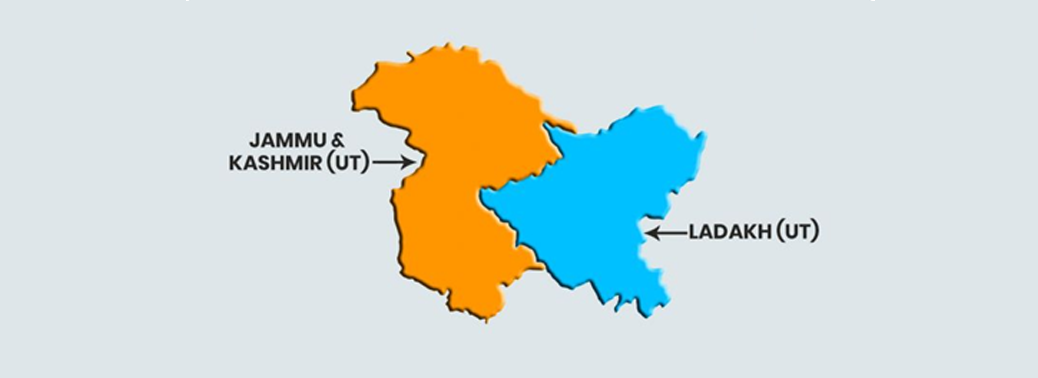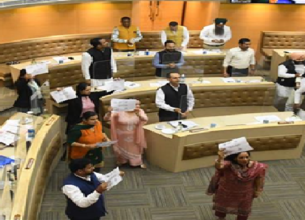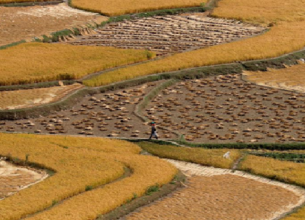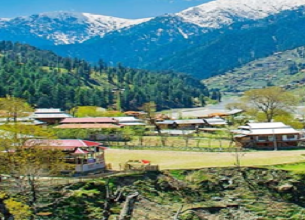WHAT HAS CHANGED IN JAMMU AND KASHMIR AFTER SCRAPPING ARTICLE 370?
07, Aug 2019

Prelims level : Governance & Polity- Indian Constitution
Mains level : GS-II- Constitution- historical underpinnings, evolution, features, amendments, significant provisions and basic structure.
Background:
- This is the first time that Article 370 has been used to amend Article 367 (which deals with Interpretation) in respect of Jammu and Kashmir, and this amendment has then been used to amend Article 370 itself.
Has Article 370 been scrapped?
- The Constitution (Application to Jammu and Kashmir) Order, 2019, issued by President “in exercise of the powers conferred by Clause (1) of Article 370 of the Constitution”, has not abrogated Article 370.
- While this provision remains in the statute book, it has been used to withdraw the special status of Jammu and Kashmir.
- President Order
- The Presidential Order has extended all provisions of the Indian Constitution to Jammu and Kashmir.
- It has also ordered that references to the Sadr-i-Riyasat of Jammu and Kashmir shall be construed as references to the Governor of the state, and “references to the Government of the said State shall be construed as including references to the Governor of Jammu and Kashmir acting on the advice of his Council of Ministers”.
What is the status of Article 35A now?
- Article 35A stems from Article 370, and was introduced through a Presidential Order in 1954.
- Article 35A does not appear in the main body of the Constitution — Article 35 is followed by Article 36 — but appears in Appendix I.
- Article 35A empowers the Jammu and Kashmir legislature to define the permanent residents of the state, and their special rights and privileges.
- Presidential Order has extended all provisions of the Constitution to Jammu and Kashmir, including the chapter on Fundamental Rights.
- Therefore, the provisions under Article 35A are now unconstitutional.
- The President may also withdraw Article 35A.
- This provision is currently under challenge in the Supreme Court on the ground that it could have been introduced in the Indian Constitution only through a constitutional amendment under Article 368, and not through a Presidential Order under Article 370.
- However, Presidential Order, too has amended Article 367 without following the amending process.
So, what has changed in Jammu and Kashmir?
- Rajya Sabha on approved The Jammu and Kashmir Reorganisation Bill, 2019.
- The Bill will come up in Lok Sabha, and is expectedly to pass.
- In effect, the state of Jammu and Kashmir will now cease to exist; it will be replaced by two new Union Territories: Jammu and Kashmir, and Ladakh. UTs have become states earlier; this is the first time that a state has been converted into a UT.
- The UT of Jammu and Kashmir will have an Assembly, like in Delhi and Puducherry.
- Not only has Jammu and Kashmir lost its special status, it has been given a status lower than that of other states.
- Instead of 29, India will now have 28 states. Kashmir will no longer have a Governor, rather a Lieutenant Governor like in Delhi or Puducherry.
Issue in Changing State in Union territory:
- Article 3 of the Constitution gives Parliament the power to amend the Constitution by a simple majority to change the boundaries of a state, and to form a new state.
- But this change requires that such a Bill be first referred to the concerned state Assembly by the President for ascertaining its views.
- Explanation II of Article 3 says Parliament’s power extends to forming Union Territories.
Can the Presidential Order be challenged in the Supreme Court? On what grounds?
- The Supreme Court will consider that Article 370 does, indeed, give sweeping powers to the President.
- The possible grounds of challenge could include the argument that the conversion of Jammu and Kashmir into a Union Territory is in violation of Article 3, as the Bill was not referred by the President to the state Assembly.
- Also, can the Constituent Assembly mean Legislative Assembly? Are the Governor and the state government one and same?










